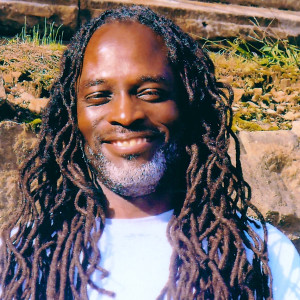A Comprehensive Report by the Center for Death Penalty Litigation









Racist Roots is a project of the Center for Death Penalty Litigation, in collaboration with scholars, advocates, historians, artists, poets and people directly affected by the death penalty. It aims to place North Carolina’s modern death penalty within the context of 400 years of history and to expose its deep entanglement with the aims of white supremacy. This project is the result of more than a year of research, writing, and relationship building. Read about our sources. This project would not be possible without the generous support of many individuals and foundations.
Paul Brown has been on North Carolina’s death row since 2000. He shot to death his estranged girlfriend, Latashonette Cox. The bullets also struck and killed a baby, David Dishon Franklin. For many years, Paul has expressed deep remorse for his crime and the two lives he destroyed. Here, he writes about the experience of being sentenced to death by an all-white jury.
The courtroom was abuzz with a low murmur, like bees trying to keep secrets. The lighting was subdued in the spectator section and brighter up front where the action would take place — like at a prize fight, a theater, or a circus. I was the one on display.
I walked in, head hung in infamy. I’d already lost everything. The trial would only be a formality, a dirge for the dead, gone too soon, and I, the living-dead, yet to relinquish physical form. I kept my eyes on the carpeting and focused on my footsteps – one in front of the other. I sat in my assigned seat without looking up.
My court-appointed attorneys greeted me in hushed tones, as though we were actual acquaintances. I wouldn’t be allowed to speak during the proceedings. I was rendered bereft of all rights, human and otherwise, by what my hands had wrought. But how I comported myself was still important, at least it was to me. I sat, intent, powerless, mute.
“All rise,” a bailiff pronounced. The Judge entered in a flowing black robe, taking a seat on his perch and banging his gavel. “Be seated,” he ordered.
After a few opening remarks, the judge asked me to stand and face my potential jurors. My knees gave an involuntary quiver. I clasped my hands together in front of me and squeezed to try and steady my nerves. I wondered if I should smile, but I thought it might be seen as callous. “The killer smiled.” A serious look might appear menacing. I wanted to just be myself but I still hadn’t gotten used to who I had become, what I had become. I tried to keep my expression neutral,without it appearing indifferent. Mostly, I was just sad. I turned left then right, scanning the crowd without making direct eye contact with anyone. No one recognized me.
The story of my life had ended, and I was now wading in its epilogue. Another jury had already found me guilty of first-degree murder, and then they were dismissed. This second jury was about to be “death qualified,” meaning they would get to decide if I was to live or die.
Under the law, prospective jurors who are opposed to capital punishment are summarily dismissed by the judge, leaving only those jurors who are supporters of the death penalty. Rather than demanding a variety of opinions and backgrounds, the process creates a lethal imbalance, allowing only those who support the state’s power to kill.
Once the pool is “death qualified,” it’s a war between the two sides, with each side fighting to keep jurors who will be most favorable to them. For prosecutors, that means looking for those most eager to vote for death.
I was familiar with the folklore about all-white juries in the American South. However, the thought hadn’t occurred to me until I noticed the prosecutor’s determination to get rid of all the black jurors. The original jury pool consisted of a large cross-section of people from all walks of life, but that quickly changed. Some people of color disqualified themselves by admitting they were against the death penalty, but there were still enough left that the prosecutor had to work to get rid of the rest. I saw his shoulders relax as each prospective juror of color left the courtroom.
When the two sides were done, I had an all-white jury. I wasn’t necessarily bothered by that. But I kept waiting for one of them to look at me, the reason we were all here. They never did.
When the two sides were done, I had an all-white jury. I wasn’t necessarily bothered by that. But I kept waiting for one of them to look at me, the reason we were all here. They never did. To not have my existence acknowledged in any way made me feel like I was nothing at all. Maybe it’s easier to sentence someone to death when you don’t see them. I realized then that the process doesn’t death qualify a jury as much as it leaves it locked and loaded.
The jury voted for death. Mom wailed bitterly. My 14-year-old daughter screamed. “Lord Jesus… JESUS!” Aunt Rose cried. The victims’ family members embraced sobbing. The judge crashed down his gavel like a sledge hammer and told them they were all out of order. There was no place for human emotion in the arena.
I was enchained. “Be strong, Daddy!” My angel was now an orphan.
“I’m alright,” I implored, unable to move, my wrists cinched tight. “You be strong, baby. Go give your grandma a hug.” I was ripped away like a page being torn out of a book.
I looked straight ahead, on my way to death row. My eyes locked with those of the prosecutor. I gave a slight nod. Chest out, chin squared, he was smug in victory. He alone had won.
Listen to Paul reading selections from his essay:
Paul Brown grew up in Washington, D.C. and Alexandria, Virginia. He has an associate’s degree from Wayne Community College and has been writing for many years while incarcerated on death row at Central Prison in Raleigh.
Watch the film and share it with your friends.